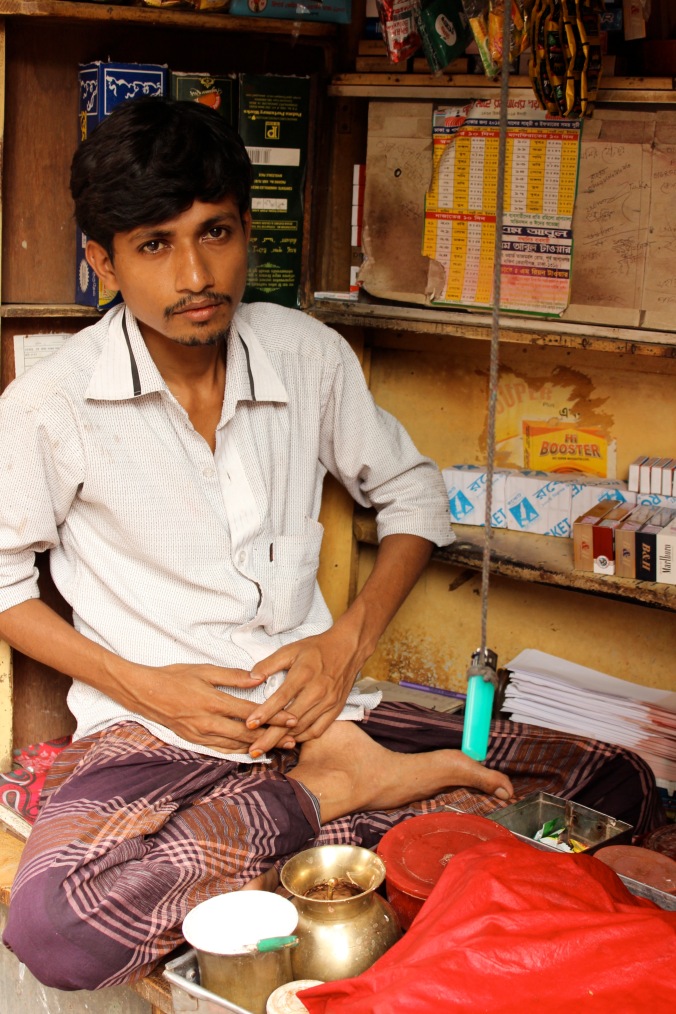‘There are no terrorists in Bangladesh.’
This was the line spun by Bangladeshi PM Shaikh Hasina until last night, when finally we saw the planned, heavily armed assault that we’d all feared was on the horizon. At 10pm, during the late dinner as people broke their Ramadan fast with iftar, several men claiming allegiance to IS opened fire on Holey Bakery, beginning a siege that lasted for 12 hours.
Holey is a place close to the hearts of many of the privileged Gulshan set – where foreigners and locals alike go for the peace and quiet, and delicious food. In the midst of Dhaka’s often overwhelming jungle of concrete and humanity, it’s a quiet refuge – an open space with shady grass and cool patios overlooking the lake. Over the last two years since it opened, I’ve lost count of the times we’ve gratefully flopped onto the grass with friends and consumed huge piles of sausage rolls, baguettes and key lime tarts, drinking in the smell of baking sourdough. Whenever we had international visitors we would take them there, as proud of Dhaka’s ever-growing cosmopolitanism and entrepreneurship as we were of the beautiful green space. Birthday parties, work dinners: if it was special, it happened here. Holey was a sanctuary.
The people eating dinner last night were all enjoying the same Holey that we did for the two years that we lived in Dhaka, participating in this lovely little pocket of green and comfort at the end of Ramadan. But the attackers cut those people open, shot them down, demanded that they recite the Quran, held them captive over night, refused to give the foreigners food or water. They tore through them and tore through the image of Dhaka’s peace.
It’s hard to know what the goal was – what icon they were attacking and why; what statement they wanted to make. It’s hard to know what to feel in the wake of this news. For those who don’t know the country well, you need to know that it’s a huge shock. This kind of organised, mass violence is not a feature of the landscape: it’s not a world of fanatics, bombings and constant fear. The Bangladesh I know is a mostly peaceful place where millions of people live crammed shoulder to shoulder, many in terrible poverty, but nevertheless manage to coexist with good humour, generosity, tolerance and unfailing optimism. This terror is new, it is horrifying; it is a seismic change in Dhaka’s world.
The number of people – young, disaffected, angry men – who are trying to prove themselves part of the global Islamic fundamentalist movement has been growing. Friends and colleagues have been worriedly speaking of the creeping fear that their secular, literary, scholarly culture is being infiltrated by hate and fanaticism, imported from the middle east. The government must bear some of the blame, for refusing to acknowledge the threat that has reared its head since the first shootings in August last year, for using the deaths of journalists, bloggers, aid workers, atheists, editors, hindus and christians over the last bloody 12 months to score political points against their opponents.
I don’t know the names of all the nine Italians, seven Japanese, three Bangladeshis and one Indian that died at Holey last night. We do know that two of them were young students. Another was Ishrat Akhond, an artist who was known and celebrated for her contribution to Dhaka’s cultural life. They all thought they were somewhere safe, in a city that valued and welcomed them. That safety has been shattered, and with it the world those who live in Dhaka thought they knew.
From so far away, all I can offer is my love to those who have been affected, my love for the country, and my hope that Bangladesh can find resilience and strength of community in the face of this horror. I’ll leave you all with the words of a wise friend of mine, a publisher who has spoken out bravely against this religious violence and attempts to control the voices of Bangladeshis everywhere:
‘During these paralysing moments, all we can do is hold hands and draw strength from one another. Otherwise the next blows that are soon to follow will blow us away in all different directions. We have lost a lot, but cannot afford to lose hope. Regardless.’

(Beautiful photo thanks to Jess Staskiewicz)

 Despite initial dismay, my increasingly Irish-accented interior monologue reminded me that getting upset just wouldn’t be in the spirit of things, now would it, while passing me a metaphorical cup of tea. I put the mistake down to serendipity and the others cheerfully forgave me. To be honest you really can’t go wrong in this part of the world.
Despite initial dismay, my increasingly Irish-accented interior monologue reminded me that getting upset just wouldn’t be in the spirit of things, now would it, while passing me a metaphorical cup of tea. I put the mistake down to serendipity and the others cheerfully forgave me. To be honest you really can’t go wrong in this part of the world.




























 In Old Dhaka, a contemplative street vendor with sad eyes sells tobacco from a hole in the wall. Buy a single cigarette and use his lighter, for only ten taka, or order paan and spices wrapped in in a betel leaf. If you ask, he’ll add in the white chalk paste to give the paan an extra gritty texture.
In Old Dhaka, a contemplative street vendor with sad eyes sells tobacco from a hole in the wall. Buy a single cigarette and use his lighter, for only ten taka, or order paan and spices wrapped in in a betel leaf. If you ask, he’ll add in the white chalk paste to give the paan an extra gritty texture.





















